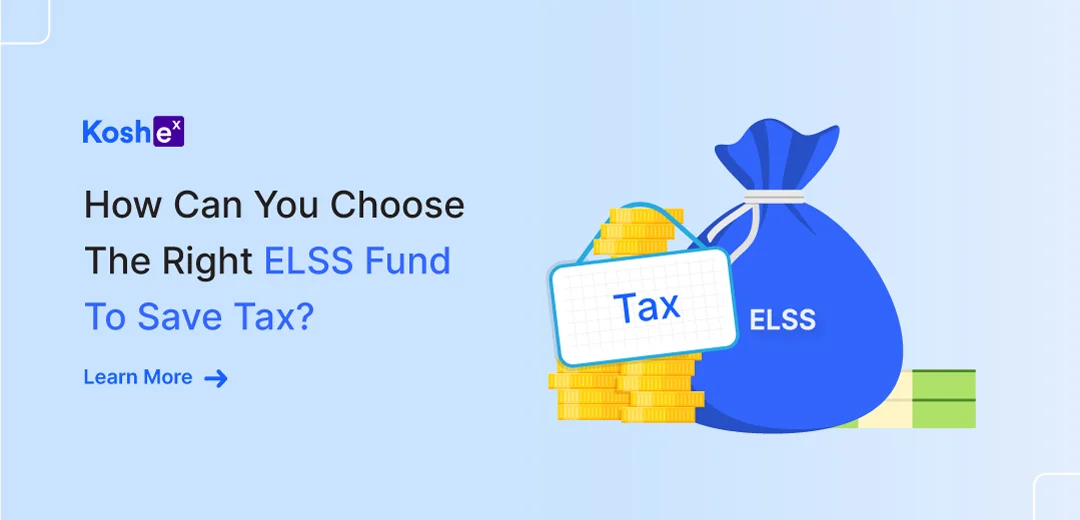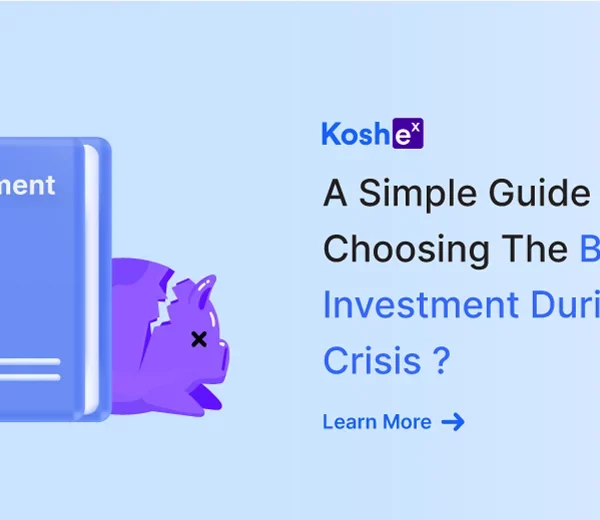With time Equity Linked Savings Scheme (ELSS Fund) is becoming a popular investment choice. Not only does it help in growing wealth but ELSS funds also help in saving tax. One can get tax benefits under Section 80C when they invest in ELSS funds by claiming up to Rs. 1.5 lakhs as deductions.
In this blog, we will talk about what ELSS funds are and how to choose the best ones to save tax.
What Are ELSS Funds?
As the name suggests, ELSS or Equity Linked Savings Scheme is a mutual fund scheme that invests the majority of its funds in equity. The remaining funds are invested in fixed-income or money-market securities. There is no upper limit on the investment amount. However, the tax deductions under Section 80C are set at a maximum of Rs. 1.5 lakhs.
ELSS funds have the potential to deliver higher returns compared to traditional tax-saving instruments. It also has a short lock-in period of only 3 years. Meaning, one can withdraw their investments after 3 years.
There are many advantages of investing in ELSS mutual funds.
Advantages of ELSS Mutual Funds
- Dual Benefits – Tax Saving and Wealth Generation
Investing in ELSS funds comes with the dual advantage of wealth creation and tax savings. Under Section 80C of the Income Tax Act, investors can claim deductions of up to Rs. 1.5 lakhs. Since the majority of the investments are in equity, ELSS has the potential for higher returns.
- Lowest lock-in Period
The lock-in period of ELSS at three years is the lowest among tax-saving instruments. The lock-in period of a tax-saving Fixed Deposit (FD) is 5 years and that of the Public Provident Fund (PPF) is 15 years.
You can sell your ELSS investments after 3 years from the date of purchase. However, you can hold on to them for as long as you want. There is no maximum investment duration. It is recommended to stay invested in ELSS for longer durations to maximize returns.
- Lower Tax on Profits
As the minimum investment duration in ELSS is 3 years, it qualifies as a long-term investment. This makes long-term capital gains from ELSS tax-free, up to Rs. 1 lakh. For gains exceeding Rs. 1 lakh, a 10% long-term capital gains tax is levied. Thus, lower tax rates and higher returns make ELSS a great investment option.
These were the many advantages of investing in ELSS funds. But how do you choose the right ELSS fund to save tax?
Choosing the Best ELSS Fund to Save Tax
Finding the right ELSS funds that help in tax saving can depend on various factors. Consider these points before investing in ELSS funds.
- Evaluate Past Performance
The past performance of a mutual fund can help in determining if it will yield high returns in the future. Don’t choose the ones that have performed well in the recent past. Instead, look for funds that are consistently performing well. The key here is consistency. Funds with a longer history of stable returns should be preferred.
Some ratios can help in evaluating a fund’s performance. These include:
- Sharpe Ratio: It is used to understand investment return and risk. The higher the ratio, the better the return will be.
- Standard Deviation: It tells how much the return made from the mutual funds varies or deviates from the expected return. It is based on the fund’s past performance.
- Jenson Alpha: It is a risk-adjusted performance measure that shows the difference between actual returns earned by a fund and the expected market return predicted by the Capital Asset Pricing Model (CAPM).
- Composition of the ELSS Fund
ELSS funds consist of a mix of small, mid, and large capitalization stocks. One has the liberty to invest more in stocks of particular capitalization. Higher investments in large-cap stocks come with stable returns and risk ratios. At the same time, higher investment in small or mid-cap stocks can be more volatile, but they may generate a greater return.
A highly concentrated portfolio carries high risk, but a portfolio that is too diverse can reduce the return-generating capabilities. Thus, one needs to choose ELSS mutual funds based on their risk appetite and return requirements.
- Expense Ratio of the ELSS Fund
The expense ratio is the cost of managing a fund. It can be administrative costs and other related operating expenses like management fees. It is calculated by dividing the total amount of fund fees by the total value of the fund’s assets. Look for schemes with a lower expense ratio.
Fund Manager’s Performance
Suppose a fund manager shows consistently good performance over an extended period. It indicates that their choice of mutual funds is likely to repeat their performance in similar market conditions.
Conclusion
With ELSS funds, one gets to save tax and build wealth. They have the lowest lock-in period (3 years) and also qualify as long-term capital investments.
ELSS funds also help in saving tax under Section 80C of the Income Tax Act, of 1961. One needs to be smart when it comes to investing in ELSS mutual funds. The right composition and concentration of different market cap of stocks can generate profits. But always remember to stay invested for the long term to gain more out of ELSS funds.
Assess your risk appetite and the return requirements before investing in the ELSS funds. For more help regarding your financial decisions, visit us at Koshex to consult with our experts. Make your account in less than 60 seconds and start investing!
FAQs
To what extent are ELSS mutual funds invested in equity-related instruments?
Almost 80% of the ELSS mutual fund allocation is made toward equity-related instruments. The remaining 20% or so funds are usually invested in fixed-income or other money-market securities.
What is the minimum amount for investing in ELSS mutual funds?
One can invest as low as Rs. 500 in ELSS mutual funds with the help of the SIP option. You can invest a fixed amount at periodic intervals.
How are ELSS mutual funds taxed?
Capital gains from ELSS are treated like any other stock product for income tax purposes. Short-term capital gains (STCG) are subject to 15% taxation, while long-term capital gains (LTCG) are taxable only if the profit exceeds Rs. 1 lakh during the financial year. LTCG attracts a 10% tax on amounts over Rs. 1 lakh.









Leave a Comment